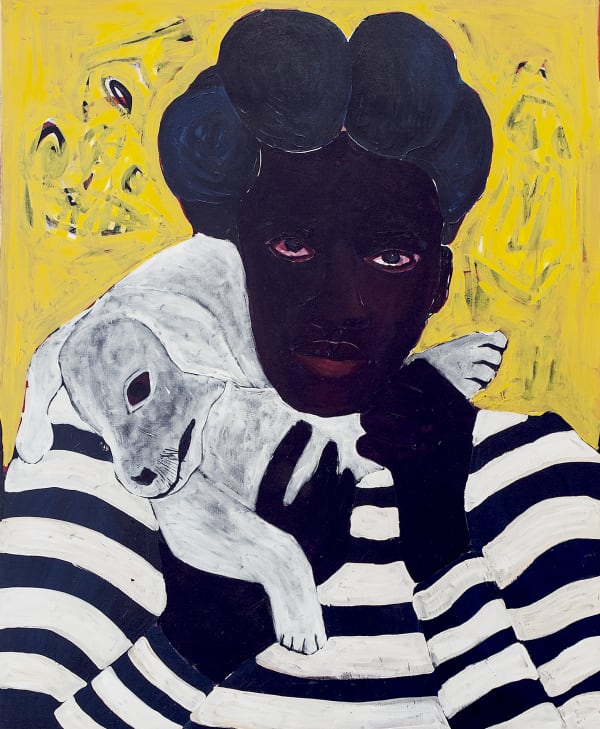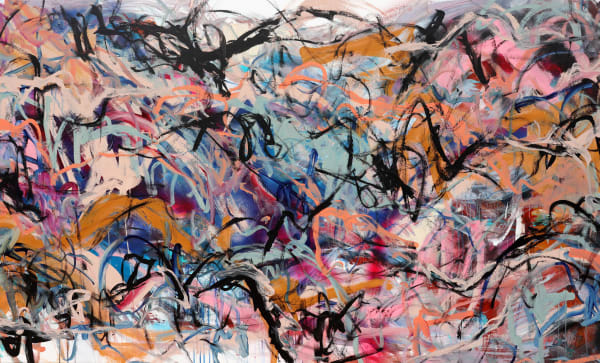-
PARTICIPATING ARTISTS
-
Amanda Baldwin
-

-
ZIPING WANG
-

-
Godwin Champs Namuyimba
-
Drawing on an extended circle of friends as his subjects, Godwin Champs Namuyimba (b.1989, Uganda) focuses on rendering the human form to explore the construction of identity in relation to race and individuality in a postcolonial African context. His paintings weave together traces of news media, busy textile patterns, and alternating solid or watery blocks of color to create intricately layered tableaux that are laden with symbolic meaning and peppered with visual clues. Namuyimba’s works notably make use of a mix of clashing perspectives, resulting in compositions that underscore the fact that observation is never stationary but forever changing and fleeting.
-
FENG LI
-

-
Jammie Holmes
-

-
SOIMADOU IBRAHIM
-
Soimadou Ibrahim’s (b.1989, France) portraits mine the potency of familial and community ties to explore the disjunctions of distance and displacement and the effects these can have on one’s sense of identity. Centering the artist’s family and close friends, Ibrahim’s portraits – rendered in broad, expressive strokes and vibrant colors – are drawn from memory and an archive of family photos. Through the application of heavy layers of paint, Ibrahim strives to materially manifest the spirit of his kin, while also reckoning with the distance between himself and daily life in Itsinkoudi, a remote village in the Comoros Islands off the east coast of Africa, where the artist lived until the age of 10 and much of his family still resides.
-
Steingrímur Gauti
-

-
A'Driane Nieves
-

-
Manuel Stehli’s (b.1988, Switzerland) paintings hover somewhere in the space between outside and inside, specific and general, real and unreal. His life-size portraits of standing and lounging figures depict familiar scenes of casual contact that feel warm and intimate, yet simultaneously muted. The mysterious air of these portraits, as with the vibrant ficus plants, landscapes, or the gingerly positioned compositions of hands, is in part due to their meticulously defined volumes and lines that paradoxically seem to only enhance their elusive, generic quality. Like the stock photographs Stehli models his figures on, his paintings evoke the French philosopher Jean Baudrillard’s definition of simulacra: “The simulacrum is never that which conceals the truth–it is the truth which conceals that there is none.”
11 – 14 November @ Shanghai Exhibition Center
Subscribe Newsletter
Be the first to know about new exhibitions, artist updates, as well as books and more. Sign up for our newsletter below.

































